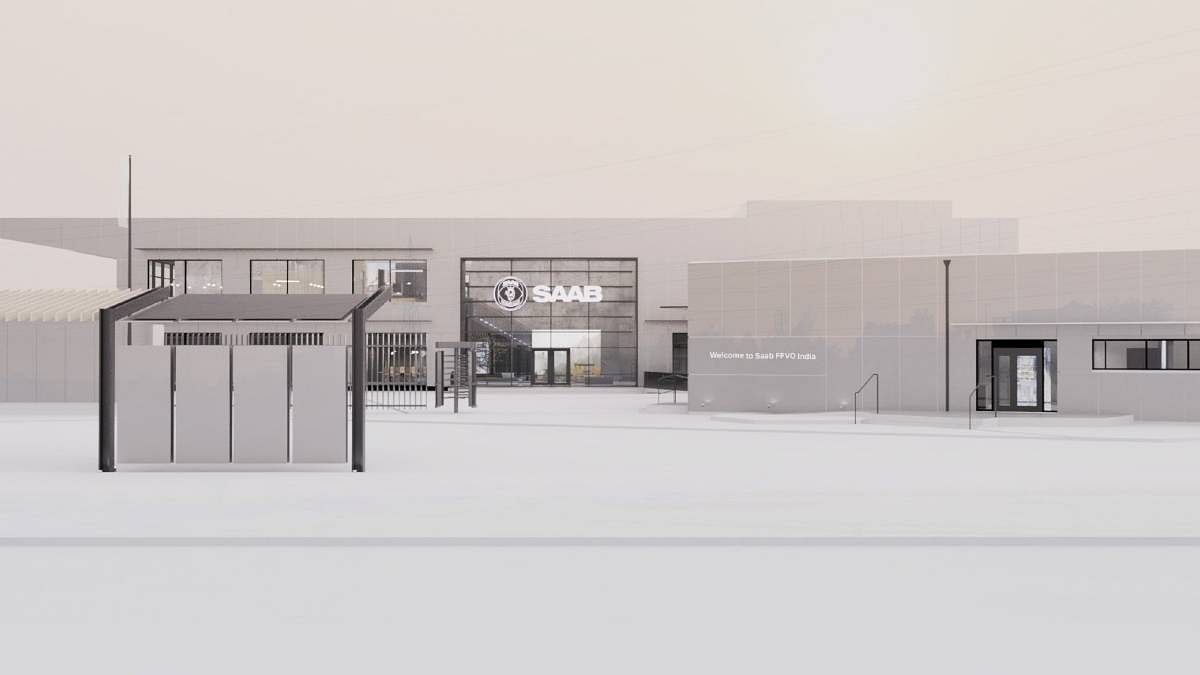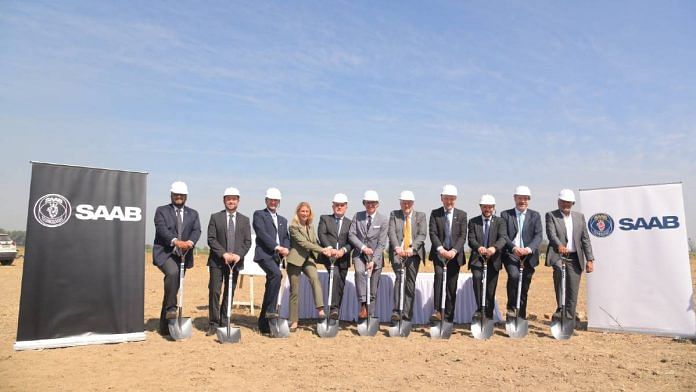New Delhi: Swedish defence major Saab Monday began the construction of its new Carl-Gustaf anti-tank weapon system manufacturing facility in India, the first such project through the 100 percent Foreign Direct Investment (FDI) route.
“I am proud to start construction of our first facility outside Sweden for Carl Gustaf M4 weapon,” Gorgen Johansson, senior vice-president and head of SAAB’s Business Area Dynamics, said.
After receiving approval for 100 percent FDI, Saab has established a new company, Saab FFVO India Private Limited, which will fully own the new manufacturing facility in Haryana’s Jhajjar.
“Today is an important milestone for Sweden and India. Saab’s factory will be the first foreign fully-owned defence production facility in India. It is a testament to the strong bilateral relationship between our countries,” Håkan Jevrell, State Secretary for Foreign Trade, Sweden, said after attending the stone-laying ceremony.
While India has allowed 100 percent FDI in defence, there is still confusion over whether any such company will be considered as fully Indian to be eligible to bid for contracts reserved for domestic companies.
“This is an Indian company because it is registered here but owned by Saab, which is Sweden-based. So yes, this company will be able to get orders through the Make in India route,” Johansson said.
He was responding to a question on whether the new company will be able to bid for projects that may come exclusively for Indian companies.
Another senior executive of Saab chipped in: “We have good indications. We are not investing based on just speculation.”

According to the existing policy, any foreign original equipment manufacturer (OEM) can set up a production facility with 74 percent stake through the automatic route.
It can be increased to 100 percent by the Indian government, depending on the technology the foreign OEM would bring in.
According to the plan, Saab aims to start production sometime in 2025 from its new facility that will be spread over 3.5 acres.
Johansson said the new facility will not just make in India for India, but also for the world.
The facility will deploy complex technologies, including the latest sighting technology and advanced carbon fibre winding, to manufacture Carl-Gustaf M4 system for the Indian armed forces, as well as components which may be included in other users’ systems by exporting them to Sweden first and subsequently to other customers, based on India’s export policy which will be governed by the end user agreement.
Incidentally, Saab has already supplied a limited number of the M4 version to the Indian Army. India is among the biggest customers of the Swedish company which supplies the anti-tank weapon system to about 40-50 countries.
At least 20 countries have ordered for the M4 version, which is a significant upgrade from the M3 because it comes with specialised ammunition, picatinny rails for fixing a variety of sights and adjusting grips according to the height of the soldier, besides being lighter by 30 percent due to the use of titanium linings rather than steel.
Also Read: Indian Navy to commission first 6 US-made Seahawk choppers to boost old fleet — what these are
Carl Gustaf
Saab had entered into a partnership with the erstwhile Ordnance Factory Board (OFB) for production of the Carl Gustaf system in 1976.
The Swedish company would continue its partnership with Munitions India Limited (MIL) and Advanced Weapons and Equipment India Limited (AWEIL), both entities born out of the corporatisation of OFB, to manufacture the Carl Gustaf M3 and its ammunition.
While MIL manufactures an array for existing Carl Gustaf ammunition, AWEIL manufactures the Mark 3 version of the weapon system.
The system has been used extensively by the Indian Army including in the 2016 surgical strikes and has also been used in Kashmir, besides being heavily deployed along the Line of Actual Control (LAC) with China.
It is the main shoulder-launched weapon in the Indian armed forces.
With a range of 1,500 metres, depending on the ammunition used, Carl Gustaf can be used against both armoured vehicles, bunkers and the infantry.
It is capable of destroying structures or vehicles with anti-armour, anti-tank and anti-structure munition, and target infantry as the munition bursts in air, sending down shrapnel.
For additional support on the battlefield, there are illumination rounds to light up tactical areas during night-time operations and instant smoke rounds to act as a tool for blinding and screening targets.
(Edited by Nida Fatima Siddiqui)
Also Read: China threat in mind, Army to order another 100 K9 Vajra howitzers from L&T, more to follow




Insiders know about our poor weapon systems. Hope FDI in defence manufacturing gives our armed forces the latest technology and weapon systems. Socialist junky Congress party would have remained happy Enfield rifles for the army.
All new projects are opened only in BJP-ruled states. That is double engine. SAB KA SAATH, SIRF BJP ka VIKAS!